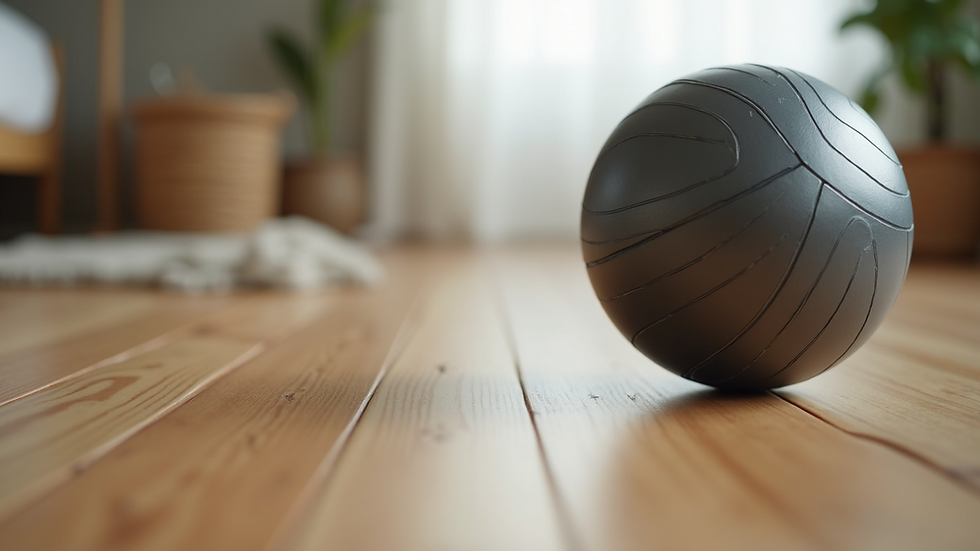Unlocking Mobility: Expert Insights on Hip Flexor Release Devices and Treatment Strategies
- garagetrainingreha
- Aug 18
- 4 min read
Hip flexor pain is a common worry for many, especially for those who sit for long periods or perform repetitive activities that stress the hip area. Physical therapists emphasize the importance of understanding and using hip flexor release devices, along with effective treatment methods, to improve mobility and reduce discomfort. This article discusses different devices and treatment strategies, offering practical tips for the best results.
Understanding the Hip Flexors
The hip flexors are a group of crucial muscles that aid in various movements. They help you walk, run, and even get up from a chair. When these muscles become tight or weak, they can cause issues like limited mobility, lower back pain, and hip discomfort.
Several factors contribute to hip flexor tightness, such as prolonged sitting, intense workouts without enough stretching, or past injuries. For example, office workers, who often spend over 8 hours a day sitting, may develop tight hip flexors, leading to significant discomfort. This scenario highlights the need to focus on hip flexor health through proactive care and treatment.
Benefits of Hip Flexor Release Devices
Hip flexor release devices are crafted to relieve tightness and improve flexibility in these essential muscle groups. Devices like foam rollers, massage balls, and handheld massagers serve unique purposes that assist in recovery and rehabilitation.
Foam Rollers
Foam rollers are cylindrical tools designed for self-myofascial release. By using a foam roller on your hip flexors, you can alleviate tension and boost blood circulation, which is vital for muscle recovery. Research shows that foam rolling can enhance flexibility by about 10% in just a few sessions.
To effectively incorporate foam rolling into your routine, roll slowly over the hip flexor area for about 30 seconds. This technique allows for deep tissue penetration, promoting muscle relaxation.
Massage Balls
Massage balls offer an effective way to target specific areas in the hip flexors that need relief. Their smaller surface area allows for focused pressure, which is beneficial for addressing tight knots. Studies have shown that targeted pressure can reduce pain by as much as 50% in individuals with hip issues.
When using a massage ball, place it against a wall or on the floor under the hip flexor region. Gradually lean into the ball to apply pressure to tight spots, holding for 20 to 30 seconds.

Handheld Massagers
Handheld massagers give you the flexibility to reach all areas of the body comfortably. These devices are especially helpful for individuals experiencing discomfort who might struggle to apply pressure effectively with traditional methods.
To use a handheld massager, position it against the hip flexor area and move it in circular motions for 5 to 10 minutes. This action promotes increased blood flow, supporting recovery and enhancing relaxation.
Complementary Treatment Strategies
While hip flexor release devices are essential in fostering mobility, integrating other treatment strategies can make them even more effective.
Stretching Exercises
Gentle stretching is vital for maintaining hip flexor health. Here are some beneficial stretches to include:
Kneeling Hip Flexor Stretch: Kneel on one knee with the opposite foot in front. Lean forward to stretch the hip of the kneeling leg.
Pigeon Pose: This yoga pose opens the hips and promotes flexibility. Start on all fours and bring one knee forward, resting it behind your wrist while stretching the opposite leg back.
Incorporating these stretches into your daily routine, ideally in the morning or evening, can help keep your hip flexors more mobile.
Strength Training
Building strength in the hip flexors is just as important as releasing tension. Exercises like leg raises, bridges, and squats help create a balanced routine that supports hip flexor health. For best results, focus on slow, controlled movements to engage the hip flexors effectively.
It's advisable to start with bodyweight exercises and gradually progress to using resistance bands or weights as your strength improves. Studies show that incorporating strength training can enhance muscle strength by up to 25% over eight weeks.
Maintaining a Balanced Routine
Maintaining a balance between stretching, strengthening, and releasing tension is essential for optimal hip flexor health. Listening to your body and adjusting your routine is crucial to preventing overexertion.
Engagement in regular physical activities, such as walking, cycling, or swimming, keeps the hip flexors active and flexible. Aim for these activities multiple times a week to support improved mobility and overall well-being.
Final Thoughts
Caring for your hip flexors is crucial for maintaining mobility and reducing discomfort. Using hip flexor release devices such as foam rollers, massage balls, and handheld massagers, in addition to effective stretching and strength-training strategies, can lead to significant improvements in function.
Everyone's experience may differ, so it's essential to explore various methods to find the combination that provides the most relief. Prioritizing hip flexor health not only boosts mobility but also enhances your overall quality of life.

As a Physical Therapist, Personal Trainer, and Licensed Massage Therapist, I provide comprehensive care for hip flexor issues—addressing not just the symptoms, but the root cause. Your treatment plan will be tailored to restore mobility, reduce pain, and support long-term recovery through hands-on therapy, targeted exercise, and expert guidance.
Karen Baltz Gibbs, PT, DPT, CSCS, LMT, CMP, owner of Garage Training & Rehab Gym
Phone: 971-719-3162











Comments